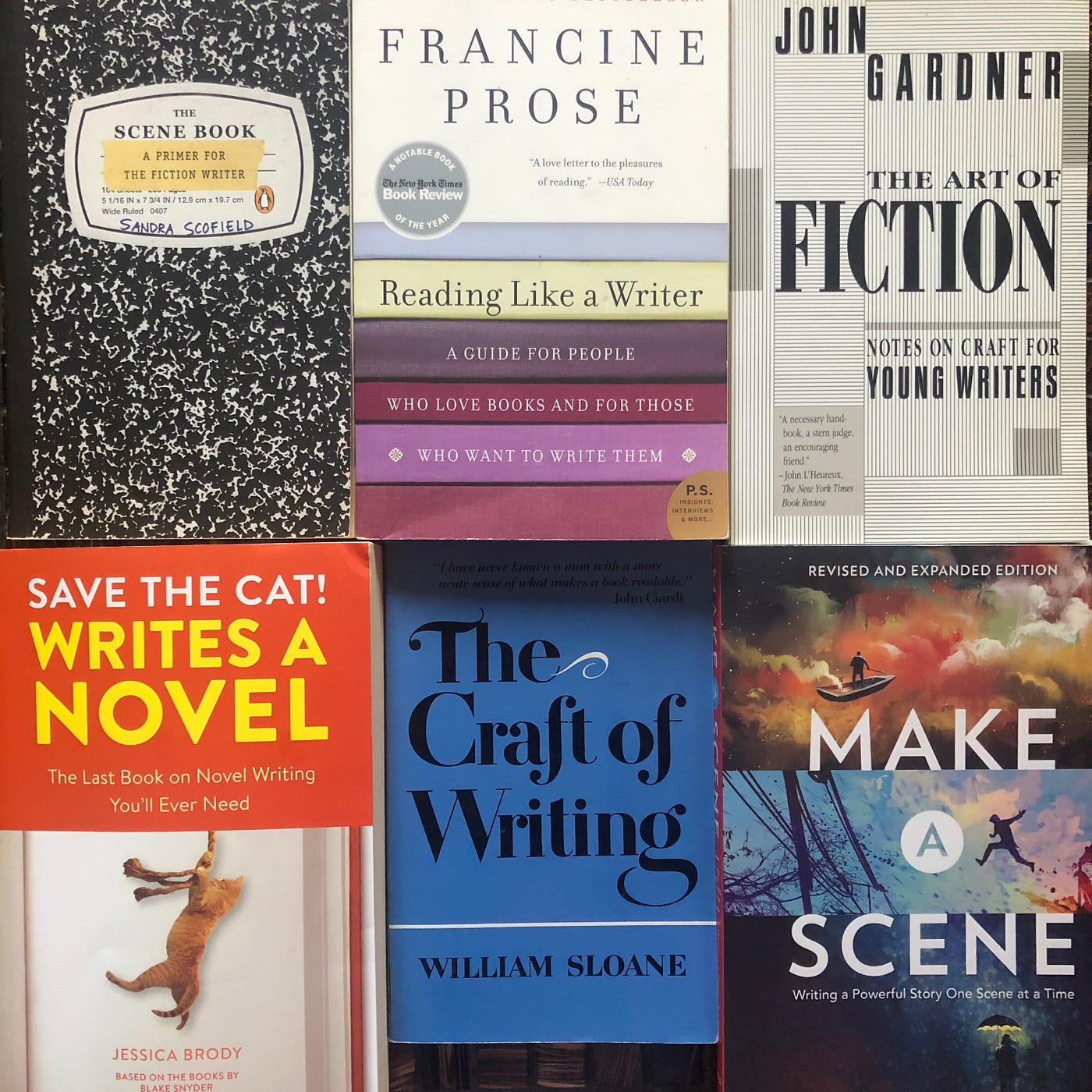Books On The Craft Of Writing
6 Craft Books for Fiction Writers
Suggested by my MFA professors
![]()

So you want to be a writer? That's great! You have an idea for a story, a basic outline, and even a picture in your head of what the cover of your new novel is going to look like. You sit down at your laptop (a brand new MacBook, by the way), and you start typing.
But then:
your cursor stares at you, blinking — taun t ing — for twenty minutes. An hour. Dawn turns to dusk. You have no words. The white of the blank document blurs your vision until you have one major realization: You don't know where to start.
If you want to be a writer — especially a successful writer — you need to study the art of writing. In order to do so, you have to, well…read. Although this is probably pretty obvious to most aspiring writers (and something you most likely already do), there are ways in which you read literature that will make your abilities as a writer stronger.
There is an art to building an effective scene, techniques for refining a sentence, structure to novels of each genre. There are tools you can acquire to be a better writer. Here are six books that have helped me hone my craft, recommended by my MFA professors:
1. The Scene Book by Sandra Scofield
Scenes are literally what make up a novel. If you can't write a scene, you can't write a book, or even a short story.
This book tells you exactly what makes up a complete and compelling scene (i.e. a beginning, a middle, and an end). It's also written in clear, easy to understand language, which makes the advice highly accessible to those who are complete novices in the art of writing.
A must read for new or inexperienced writers.
The Scene Book
2. Reading Like a Writer by Francine Prose
In my recent article 10 Things I Learned About Writing From My $50,000 MFA Program, I said that "one unfortunate lesson you learn if you want to be a good writer is that you are no longer allowed to read for pleasure. Everything you read will be for the purpose of your craft."
I stand by this.
The ability to analyze a text, with a mind toward craft rather than literary meaning (i.e. something you would've written about The Great Gatsby in your high school English class), is an important skill to hone because it allows you to learn from the stories you read. Francine Prose analyzes the classics and explains why these works continues to thrive. She encourages you to look at the techniques used by these writers. Most importantly, she urges you to slow down and really pay attention to the words that you're reading.
Reading Like a Writer
3. The Art of Fiction by John Gardner
This is a classic, and one of my personal favorites. John Gardner is to writers as Konstantin Stanislavski is to actors (that's probably a bad analogy, unless you're a theater nerd, like myself). Case and point: he is famous in our world.
As a writer and teacher of the craft, his expertise comes with years of in-the-field experience. Gardner touches on everything in this book, first explaining what fiction is, and then covering the technical aspects of the craft and why they are important.
The Art of Fiction
4. Saves the Cat! Writes a Novel by Jessica Brody
This one wasn't technically recommended by a professor in my program (it was suggested by a Young Adult author who is also a student), but I loved it so much that I can't leave it out.
Jessica Brody takes a look at famous novels from each genre and breaks them down into parts. She reveals what every novel from said genre must contain in order to be successful. She even goes as far as to suggest at which point in your novel (split into acts) key elements must occur. For example, the theme must be stated within the first 5% of the story.
Bonus: Jessica Brody is fun and engaging, so a lot of what she writes reads as a narrative.
Saves the Cat! Writes a Novel
5. The Craft of Writing by William Sloane
As with all of the authors of these books, William Sloane comes with a slew of credentials. This book is a compilation of his lectures, letters, and editorial experience.
One detail Sloane touches on that isn't present in many other craft books on writing is the importance of the reader. What is a novel — even the classics — without an audience? It also, as with the others, offers advice on techniques that are necessary tools to have in order to produce good writing.
The Craft of Writing
6. Make a Scene by Jordan Rosenfeld
I've included a second scene book because the ability to write in scenes is the most important skill an aspiring author (or even someone just writing for fun) can have.
This book provides step-by-step instructions on how to craft a scene. It talks about how to make opening scenes interesting enough to hook the reader, how to transition from one scene to the next, and how to establish your characters in the scene. It even provides information on different types of scenes (suspenseful, action, flashback, etc…) and each of their individual purposes.
Make a Scene
Books On The Craft Of Writing
Source: https://writingcooperative.com/6-craft-books-for-every-writer-e5d9761cdff9
Posted by: nunezhurasawends89.blogspot.com

0 Response to "Books On The Craft Of Writing"
Post a Comment